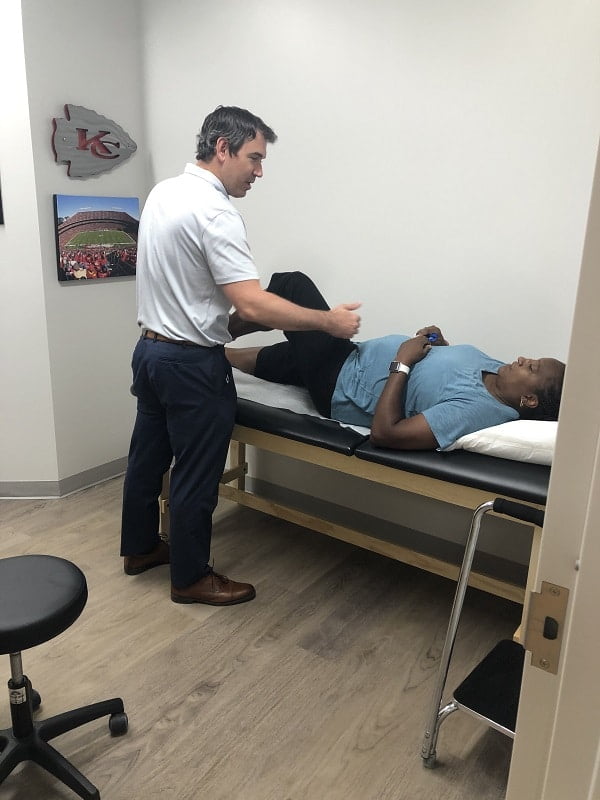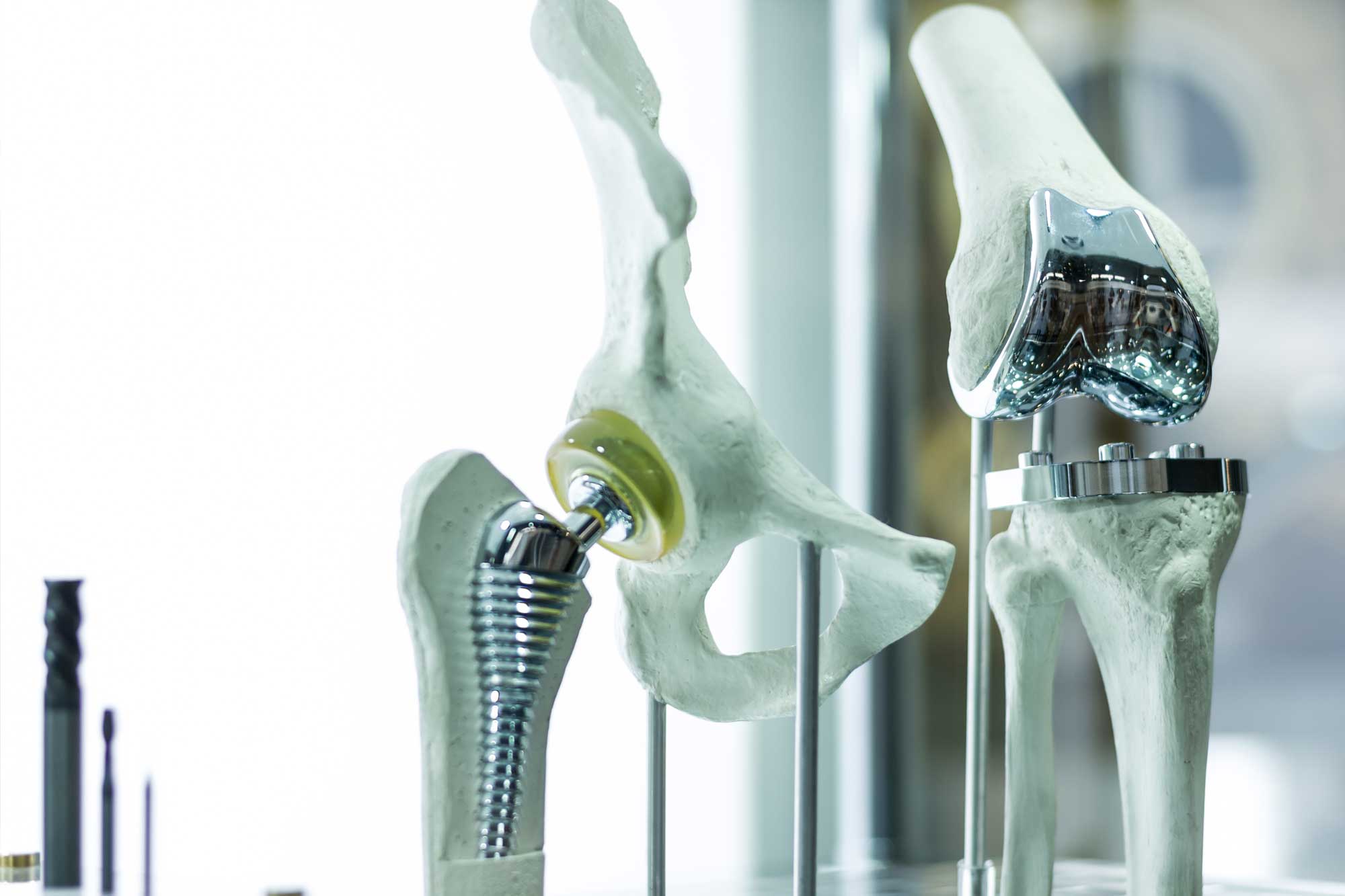Joint Replacement Surgery
Joint replacement is major surgery. Being prepared before and after surgery will ensure a successful and full recovery.
You play a key role in your recovery. We have outlined how to prepare, what to expect, as well as do’s and do not’s after surgery. Follow these guidelines and ask your care team questions.
What is Arthritis?
Arthritis is a general term for inflammation within a joint or area where two bones come together. Types of arthritis can include those related to wear and tear of cartilage, known as osteoarthritis, to those associated with an autoimmune disease, such as rheumatoid or psoriatic arthritis.
Although any joint can be compromised, the hip, knee, and shoulder are often more commonly affected by arthritis.
It is not always certain why arthritis develops. Most physicians believe it is a combination of factors, such as muscle weakness, obesity, heredity, joint injury or stress, constant exposure to the cold, and aging.
Types of Joint Replacement
Hip Arthritis
![]()
Knee Arthritis
![]()
Shoulder Arthritis
![]()

PREPARING FOR SURGERY
Pre-Surgical Experience
Before your surgery, you may be asked by your surgeon to obtain a letter of clearance from your primary care provider (PCP), cardiologist, pulmonologist, or other specialists stating you are cleared for surgery. Please have your doctor fax the letter to (816) 525-2841.
Pre-Admission Testing
You will receive a call from the surgical facility about 1-2 weeks before your surgery date. They will schedule a pre-operative visit to review your health history, allergies, and medications. They will also collect any preoperative labs at this time.
Medications
We ask that you stop any non-steroidal anti-inflammatory drugs (NSAIDs) 5-7 days before surgery. This includes ibuprofen, naproxen, aspirin, meloxicam, Celebrex, fish oil, and cinnamon. The surgical facility will instruct you on which medications to take the morning of surgery. Any medications you were instructed to take before surgery, please take with a small sip of water.
Dental Cleaning & Examinations
Please schedule any dental work 6 weeks prior to your surgery, including cleanings. After surgery, please wait 3-6 months before scheduling any routine dental visits. Please check with your surgeon on the timeline. Following surgery, for at least 2 years after your joint replacement, you will need to pre-medicate with antibiotics prior to any dental procedures. This is to decrease the risk of infection. Please contact the office to obtain the prescription.
Prepare Your Home
Cleaning your home prior to surgery is helpful. Tack down any loose carpeting, electrical cords, or any trip hazards. You may want to obtain a shower chair or a toilet seat riser. We also suggest obtaining “Press and Seal” or clingwrap prior to surgery to help keep the incision site dry after surgery.
Exercise & "Prehab"
Exercising or going to physical therapy before your joint replacement can help with your recovery. The office can either provide you with a home exercise program or refer you to a physical therapist to create a program. We recommend starting this now.
Durable Medical Equipment (DME)
We suggest obtaining a walker and a cane prior to your hip or knee surgery. The facility can supply this as well. You will begin with a walker after surgery and transition to a cane as you tolerate it. Physical therapy and your surgeon can discuss appropriate timelines with you.
Driving After Surgery
You will need someone to drive you home after surgery. Please prepare a family member or friend to do so. After your surgery, we do not want you to drive while taking narcotic pain medications (i.e. oxycodone, hydrocodone). Generally, after a left knee or hip total joint replacement, we do not want you to drive for at least 2 weeks after surgery. After a right knee or hip total joint replacement, we do not want you to drive for at least 6 weeks after surgery. After a shoulder replacement, we do not want you to drive while in a sling, which can be up to 6 weeks after surgery. Please make arrangements for post-operative appointments and physical therapy appointments.
Controlling Pain After Joint Replacement
Our goal at Sano is to help you control your pain and reduce it over time, but you can expect some pain immediately and in the weeks following surgery.
There are various ways to help reduce pain after surgery that is simple to do and don’t involve the use of narcotics.
- Physical Therapy
- Ice
- Heat
- Adjusting your sleeping position
- Resting – do not overdo it or return to certain activities too soon
- Medications
After Surgery Care
Incision Site Care
Your incision site is about 4-6 inches long. Generally, your sutures will be under the skin, and the incision will be covered with glue and a dry dressing. After surgery, please leave the bandage until your first post-operative office visit. You will need to keep the incision site and bandage dry. The best way to do so is to use “Press and Seal” or plastic cling wrap. If your bandage becomes wet or saturated, you may remove the dressing and redress it with a dry dressing. Please also notify the office.
Once the bandage is removed at the office, your incision site may get wet. You can let soap and water run over the incision site. Pat dry. Do not scrub directly over the incision. We DO NOT want you to submerge your incision site in a bath or pool for approximately 6 weeks after surgery.
Please DO NOT put any lotions, ointments, supplements, or other topicals on the incision site until the office instructs. This is approximately 6 weeks after surgery.
Medications After Surgery
You will be discharged with 2-3 types of medications after surgery, one for pain control, one for blood clot prevention, and one for infection prevention. Depending on if you are discharged the same day or the following day will determine if you are discharged with an antibiotic.
Pain Medications
You will receive pain medication before, during, and after your surgery. Our providers generally prescribe a narcotic pain medication for after surgery. Please take this as directed, generally 1 tablet every 4 to 6 hours. REMEMBER: one side effect of narcotic pain medication is constipation; an over-the-counter stool softener or laxative will help with this. Please drink plenty of water.
Antibiotics
If you stay at the surgery facility for over 23 hours, you will be given an antibiotic there and will not be discharged with one. However, you will be discharged with an antibiotic if you go home the same day. This is to help decrease the risk of infection after surgery.
Anticoagulation (Blood Clot Prevention)
After surgery, there is an increased risk of developing a deep vein thrombosis (DVT) or blood clot. Your surgeon generally will have you take aspirin twice a day. Please notify your surgeon if you have a prior history of a DVT or a pulmonary embolism (PE). They will place you on a different medication, likely Xarelto. Please take that as directed. Your surgeon will have you take this for 6 weeks following surgery.
Signs and symptoms of a blood clot:
- Increasing pain in the calf of your surgical leg
- Tenderness and increasing swelling in your calf, ankle, and foot
- Sudden redness in your calf
Physical Therapy
Physical therapy after surgery is a crucial part of your recovery. You can either have home health physical therapy, where they come to you, or outpatient physical therapy, where you go to them. Please notify the office of your preference, and we will set it up.
Total Knee Replacement Goals
After a partial or total knee replacement, your biggest goal is to increase your range of motion to full extension (your knee being flat or straight) and full flexion (your knee is bent). Your physical therapist and your providers will take measurements throughout your recovery. DO NOT place a pillow under your knee for support while resting; you may place one under your ankle to facilitate full extension.

CAUTION!
Signs of possible blood clot:
- Increasing pain in the calf of your surgical leg
- Tenderness and increasing swelling in your calf, ankle, and foot
- Sudden redness in your calf
Please call the office or 911 immediately if you experience:
- Sudden shortness of breath
- Sudden onset of chest pain
- Localized chest pain with coughing
Signs and symptoms of infection:
- Thick, white, or greenish drainage coming from the incision site
- Foul smelling drainage
- Increasing redness, tenderness, or swelling of the incision
- A persistent fever of 100 degrees orally or higher
- Increased pain with both activity and rest
Please get in touch with the office immediately if you are experiencing any of these signs or symptoms.
After Surgery Care
Anterior Total Hip Precautions
With an anterior total hip approach, you will have two restrictions for 6 weeks after surgery; no excessive extension and no external rotation.
Posterior Hip Replacement Precautions
With a posterior total hip approach, you will have three restrictions for 12 weeks after surgery; no flexion past 90 degrees, no hip abduction, do not cross your legs.
Total Shoulder Replacement Goals
After a total or reverse total shoulder replacement, you will be in a sling following surgery. Each surgeon has their preference on how long you are in the sling and when you will start physical therapy. Overall, it is recommended that you do not lift anything heavier than a coffee cup with your surgical arm for the first 6 weeks after surgery.
- If you had subscapularis repair, you have one restriction, no forceful internal rotation, such as reaching behind you, for 6 weeks after surgery.
- If you had a reverse total shoulder replacement, you must avoid pushing yourself up out of a chair or bed with your surgical arm for the first 3 months after surgery.
Frequently Asked Questions about Joint Replacement
How long will my surgical leg swell after surgery?
The swelling generally occurs after more activities. You will notice increases and decreases in the amount of swelling for a year or more after surgery, especially with weather changes. Ice over the incision site and elevation of the entire leg can help decrease your swelling.
Will I notice anything different after my joint replacement?
You will have numbness around the incision site, which may decrease in size over time. However, you may always have a numb area. You may also notice stiffness, which will improve with physical therapy and over time. Some patients note a “clicking” noise in their knees; this results from the artificial surfaces coming together – nothing serious.
How can I travel or fly with my joint replacement?
When traveling, especially the first 12 weeks after surgery, we ask that you take frequent breaks every 2-3 hours to stand up and walk around. We would encourage you to take an anticoagulation medication during the travel portion of your trip. You will also set off metal detectors. Notify the personnel that you have a joint replacement.
When will I be able to go back to work?
Time off work can vary depending on your job requirements. Your surgeon will allow you to return to work based on that anywhere from 2 weeks to 12 weeks or longer. We encourage you to discuss that with your providers.
